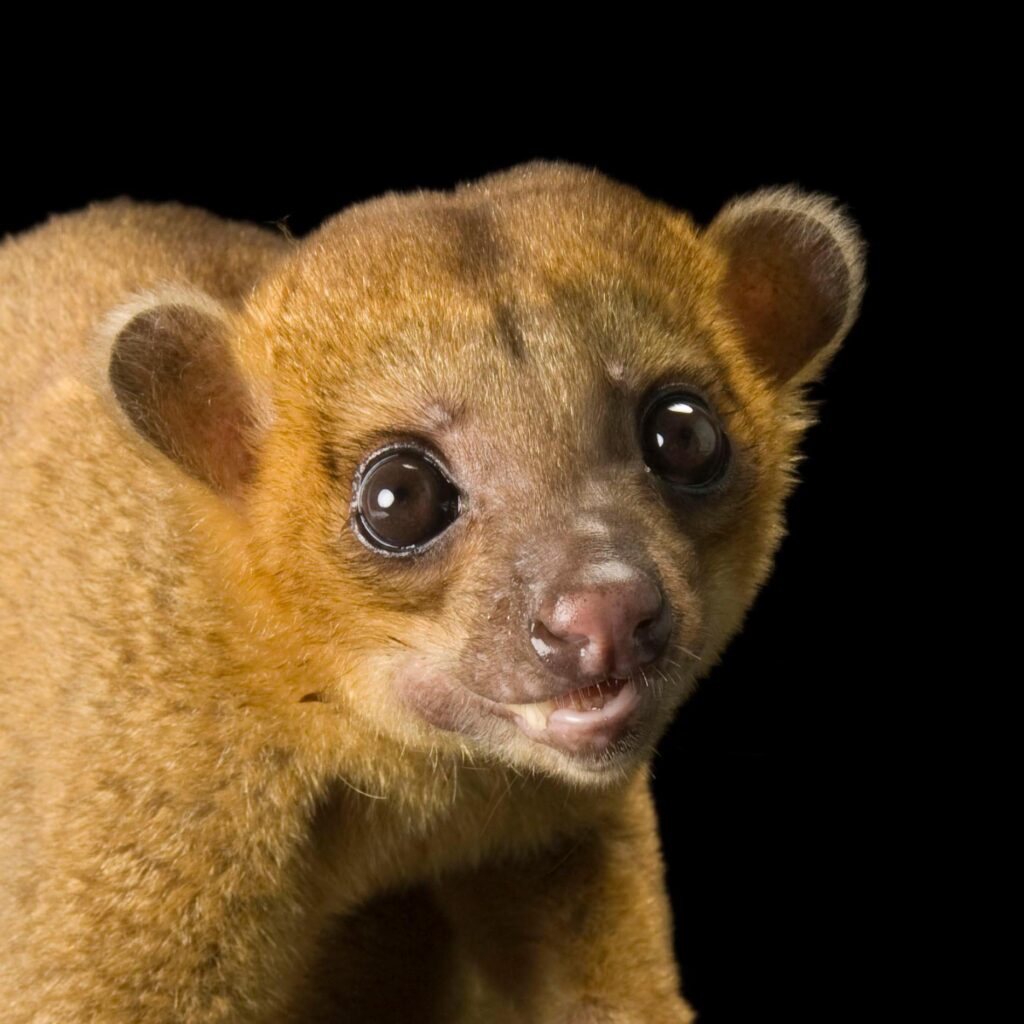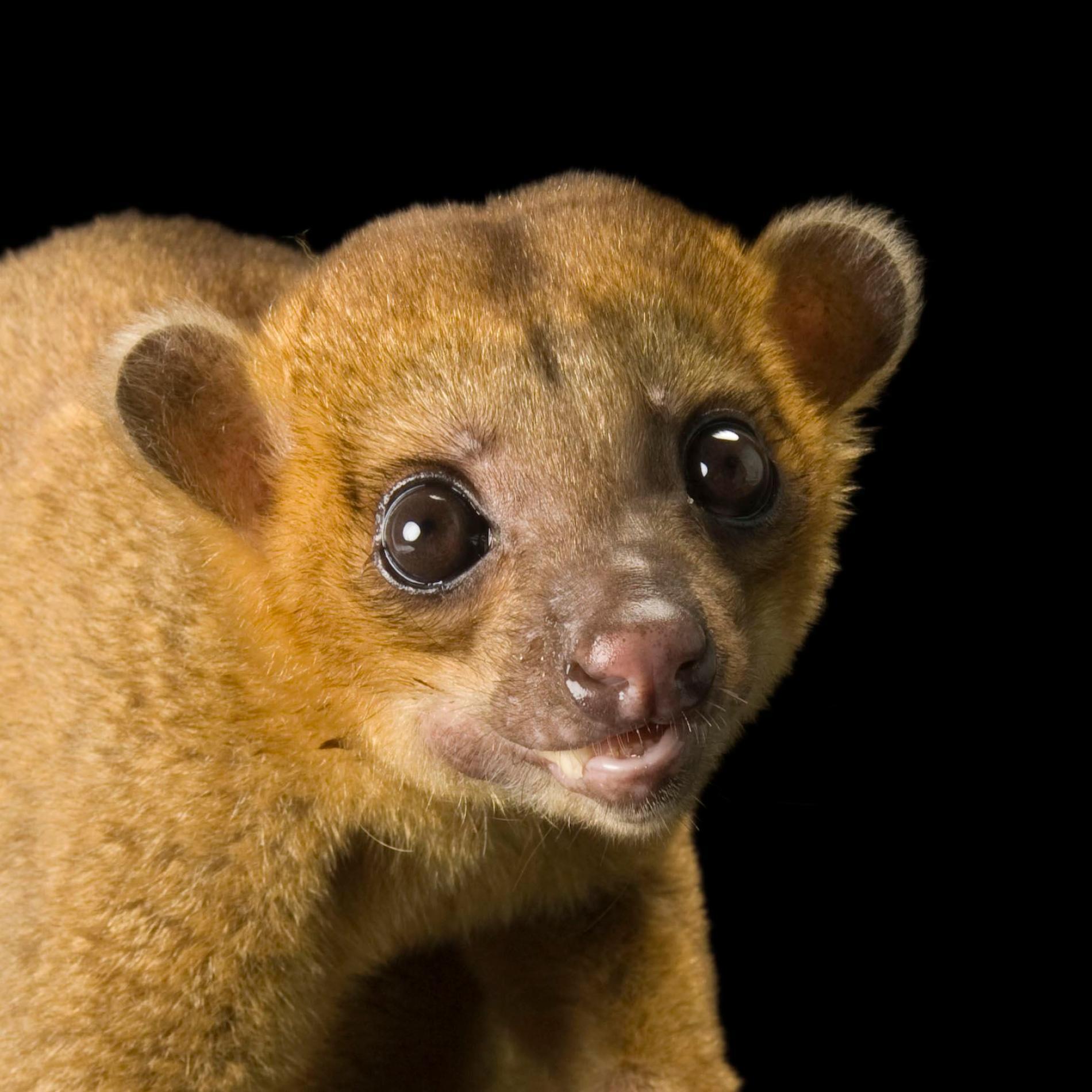ANIMAL: Kinkajou Potos flavus Type of Animal: Raccoon Habitat: Tropical forest, deciduous forest, plantations, savanna forest, tropical savanna Location(s): S Mexico to S Brazil & N Bolivia Appearance: Round head, big eyes, short dark brown to black pointed snout, short limbs, small rounded ears, long prehensile tail, fur color ranges from tawny olive/wood brown/yellowish tawny on upper areas to buff/tawny/brownish yellow on lower areas, short woolly dense fur, often golden-brown to grayish-brown coloration overall Food/Diet: Nectar, fruit, honey, pollen, melons, berries, flowers, blossoms, insects, insect larvae, leaves, greens, vegetables, vegetation, herbs, legumes, bark, eggs, birds, small mammals, frogs Status in Wild: Stable Conservation: Breeding in zoos, wildlife centers, & private breeders Lifestyle: Solitary or small groups Additional Info: Called: Male: Boar Female: Sow Young: Kit/Cub Group: Band/Troop Weight: Adult: 3.1-10.1 lbs Young: 1.6 lbs Gestation: 4 months Life Span: 20 years in wild, up to 30 years in captivity Height: Male: 1.3-1.8 ft Female: 1.2-1.8 ft Body Length: Male: 1.3-1.8 ft Female: 1.2-1.8 ft Tail Length: Male: 1.4-1.9 ft Female: 1.3-1.9 ft Main predators are felids, raptors, boas, tayras, & foxes. These animals are highly arboreal, spending much of their time in the trees. Sexually mature at a year old. While common, they’re rarely seen due to nocturnal lifestyle. Breed year-round, giving birth to 1-2 young. Eyes open at 1-2 weeks old, eating solid food at 2 months old, & mastering climbing at 3 months old. Eyes highly reflective of light, giving them bright orange eyeshine. Long prehensile tail acts as additional arm, providing balance/holding branches when moving through trees as well as blanket when animal sleeps. Territory marked using glands near mouth/throat/belly. Due to diet, they’re important pollinators. Fun Fact(s): Sometimes kept as pets-these animals not for beginner pet owners due to nocturnal habits & unpredictability. 1 of only 2 mammals in order Carnivora to have prehensile tail. Scientific name translates to “golden drinker.” Often called “Honey Bears” due to claws/appearance & love for honey. Other names are Night Walker, Night Ape, Micoleon (Spanish for “Lion Monkey”), & La Llorona (Spanish for “crying woman).” These animals can be very noisy at night, barking, screaming, hissing, high-pitch squeaking, & crying. 5-inch long tongue used to extract certain food items.

